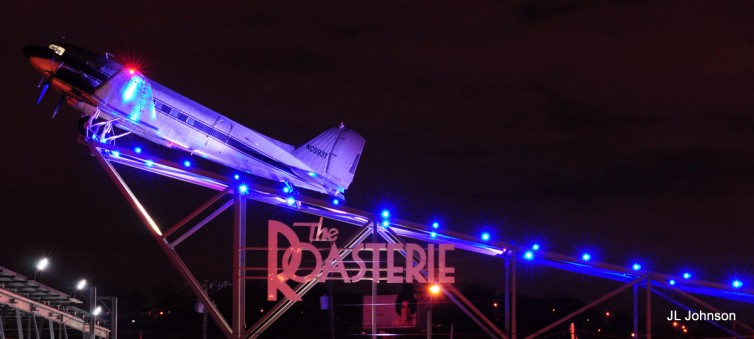
The Roasterie’s roof-mounted DC-3
I’m an #AvGeek. I love specialty coffee, classic airplanes, and my hometown of Kansas City. Let’s combine them all! Here at AirlineReporter we are a fan of all things aviation, including those on the fringe. Say for example, King Nut, the snack provider to the world’s airlines, or a brewery with beer lines which cater to AvGeeks. Today we’re taking a look at The Roasterie, a specialty coffee company that is obsessed with the iconic Douglas DC-3.
How much do you love airplanes? Enough to dedicate the branding of your company to one of the most recognizable planes in history? Ok, that’s easy enough. But do you love DC-3s enough to have one restored and mounted to the roof of your downtown Kansas City coffee roasting plant? This, my friends, is the apex of AvGeek achievements, a level unlocked in 2012 by The Roasterie founder and president, Danny O’Neill.
The Roasterie has long been an iconic KC brand, but when they mounted a DC-3 to their building, they changed the skyline and commanded attention from anyone even remotely interested in airplanes. It’s hard to drive on I-35 through KC and not notice this plane that looks as if it has just reached V-1 and is rotating out of downtown. I have long been a fan of The Roasterie and always intended to visit for one of their free tours, but as locals tend to do, I kept putting it off. What better way to remind folks of their intent to visit than to mount a piece of AvGeek eye candy to your roof? It was time to dig a bit deeper, and I have to be honest, I’m glad I did…
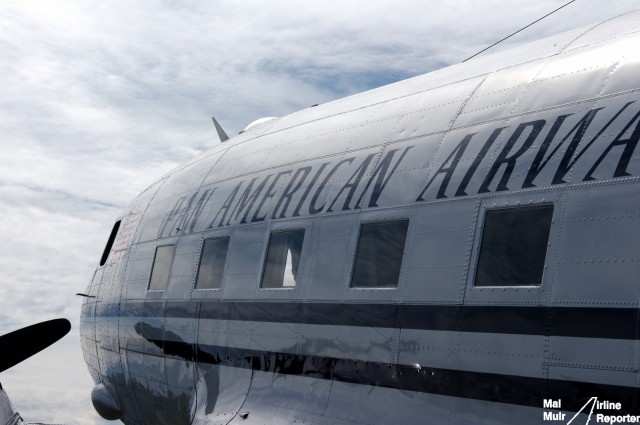
The HFF DC3 – Photo: Mal Muir | AirlineReporter.com
Paine Field (KPAE) in Everett, WA is home to a variety of both modern and vintage aircraft. Though brand spanking new Boeing planes are built there and delivered to around the world, the vintage aircraft hopefully come to stay around for a while.
At the Historic Flight Foundation (HFF) there are some glorious classic aircraft that have been painstakingly restored and are much loved by not only their owner, but also the volunteers who look after them. One such recent arrival joining the collection is a beautifully restored Douglas DC-3, in Pan American Airways [PanAm] livery, that has a checkered past. I was recently invited to check out the aircraft and was able to learn a bit more about its history.
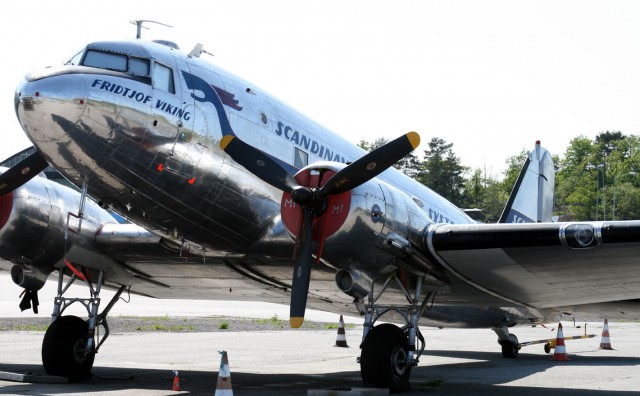
Scandinavian DC-3. Photo by Matt Falcus.
This is a guest post by Matt Falcus. He is an author of the popular Airport Spotting Guides series, and runs the blog AirportSpotting.com which helps aviation enthusiasts make the most out of their hobby with airport, airline and aircraft news and spotting information.
With yet another series of enthusiast’s trips to North Korea recently announced by specialist operator Juche Travel, the demand for flying on historic and rare aircraft types is big business amongst aviation geeks.
I’m sure I don’t need to remind you that classic jets and props are now very much a dying breed, replaced by the modern aircraft produced by Airbus, Boeing and other manufacturers. We can’t deny the fantastic advances in today’s aircraft, but neither can we deny that it’s not quite the same as the old days.
If you’re lucky enough to see first generation Boeing and Douglas aircraft in action today, chances are it’s with a cargo airline. But with a bit of research, it might surprise you to learn that there are still opportunities to fly on older jets, props and Russian types ’“ opportunities which won’t last for long.
It is well documented that there is only one airline still flying the Boeing 707 in passenger services, and many enthusiasts have made the journey to Iran to take a flight. The operator, Saha Air, operates the type on domestic services, however it is upgrading its fleet, meaning and the chances of flying a 707 are rapidly diminishing.
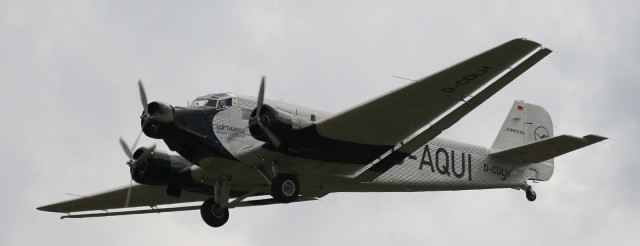
A Lufthansa Junkers J 52 (D-AQUI). Photo by Matt Falcus.
The Boeing 727 can today only be found flying passengers in Africa, Iran and Afghanistan. Perhaps these sound like unlikely destinations, but when you consider that they are flown into Dubai on a daily basis, it makes the chance of flying on a short hop to Tehran and return quite feasible.
Even early Airbus products, which you might consider to be relatively modern ’“ namely the A300B2 and B4 models ’“ are now only operated by Iranian airlines.
Canada is a relatively easy place to find a number of rare types still flying passengers, and much easier to travel to for those in the USA. TV shows such as Ice Pilots NWT have highlighted Buffalo Airways and their DC-3 ’˜sked’ service. But did you know airlines in Canada also fly some of the world’s last commercial Convair 580, DHC-7, and Hawker Siddeley HS.748 services?
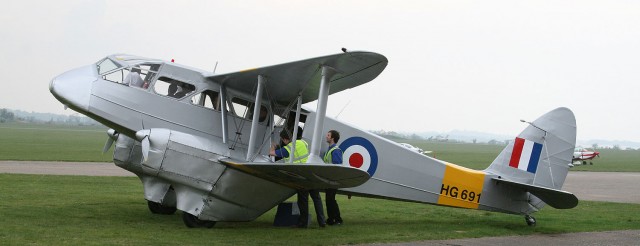
Dragon Rapide by Matt Falcus.
When it comes to Russian airliners, the chance of catching them are running out fast ’“ particularly with the Tupolev TU-134, which has recently been banished from Russia’s airlines. However, organized trips to North Korea are now regularly organized by Juche Travel Services which are targeted at aviation enthusiasts. These offer trips on Air Koryo’s Ilyushin IL-18, IL-62, IL-76, Tupolev TU-134, TU-154, TU-204, and Antonov AN-24. Needless to say you’d be hard pressed to organise flights on each of these types so easily elsewhere.
In Europe you can find some rarities, including the last passenger British Aerospace ATP operator, Next Jet. This airline operates the type on domestic services from Stockholm, Sweden ’“ a pilgrimage I recently made, after missing out on flying the ATP in my native UK.

Classic tri-holder, the MD-11. Photo by Matt Falcus.
One of the most recent types to feature on the endangered list is the McDonnell Douglas MD-11. Anticipated as having massive potential as the natural successor to the DC-10, its debut was as recent as 1990, but today only KLM Royal Dutch Airlines still operates the type in scheduled passenger service. If you haven’t flown the MD-11, you’d better head to Amsterdam soon as the airline has already begun retiring the type and is expected to complete this in 2013.
Finally, when it comes to even older airliners from the early 20th century and wartime periods, there are a number of specialist operators in Europe, Australia, New Zealand, South Africa and the USA still keeping these types alive. For the de Havilland Dove, look up LTU Classik in Dusseldorf. If you want to fly a DC-4, Skyclass of South Africa have an example flying tourists. For the Ford Tri-Motor, look no further than the EAA Museum at Oshkosh, WI. For a Junkers Ju52, there are examples flying in Germany and Switzerland.
For full details on the rarest and most historic airliners still flying passengers, including details of the airlines and countries still flying them, check out my new eBook ’“ Last Chance to Fly.





